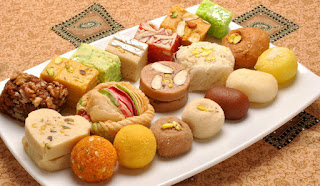"Discover the Sweet Magic of West Bengal Sweets: A Journey Through Rich Traditions"
Introduction:
West Bengal, located in the eastern part of India, is a region renowned for its rich cultural heritage and diverse culinary delights. Among its many culinary gems, West Bengal sweets hold a special place in the hearts of both locals and visitors alike. The state's vibrant dessert culture reflects the confluence of history, tradition, and local ingredients, resulting in an array of mouthwatering delicacies that have stood the test of time. In this article, we embark on a journey to explore the delectable world of West Bengal sweets, delving into the history, popular varieties, and the significance of these sweet treats in the region's social and cultural fabric.
1. Historical Significance of West Bengal Sweets: The tradition of sweets in West Bengal can be traced back to ancient times. With influences from various cultures that have passed through the region, including the Mughals, Portuguese, and British, West Bengal sweets have evolved into a unique amalgamation of flavors and techniques. Sweet shops, often referred to as "sweetmeat shops" locally, have been an integral part of the state's culinary landscape for generations, serving as communal spaces where people gather to share joy and celebrate special occasions.
2. Traditional Sweet Making Techniques: The preparation of West Bengal sweets demands precision and skill, often passed down through generations. The use of pure, high-quality ingredients, such as chhena (freshly made cottage cheese), khoya (reduced milk solids), and nolen gur (date palm jaggery), forms the foundation of these delectable treats. Local artisans or "mists" carefully craft these sweets using age-old techniques, giving them a distinct texture and taste that sets them apart from sweets found elsewhere.
3. Popular Varieties of West Bengal Sweets:
a. Rasgulla: Perhaps the most famous West Bengal sweet, Rasgulla consists of soft, spongy cottage cheese dumplings cooked in a sugar syrup. The art of making perfectly spongy Rasgullas requires finesse and expertise.
b. Sandesh: Sandesh, made primarily from chhena, comes in various flavors and textures, from the simple "Narkel Sandesh" with grated coconut to the delightful "Koraishutir Sandesh" incorporating green peas.
c. Mishti Doi: Translating to "sweet yogurt," Mishti Doi is a creamy dessert prepared by caramelizing milk and sweetening it with jaggery or sugar. It is often served in earthen pots for an authentic touch.
d. Cham Cham: Resembling elongated Rasgullas, Cham Chams are cooked in sugar syrup and adorned with a hint of saffron or chopped pistachios for added flavor.
e. Rasmalai: A close cousin of Rasgulla, Rasmalai features cottage cheese dumplings soaked in flavored milk, garnished with nuts and saffron.
4. Festivals and Celebrations: West Bengal sweets hold great cultural significance during festivals and celebrations. During Durga Puja, the most auspicious festival in the state, offerings of sweets are made to the Goddess Durga, and sweet shops display a vast assortment of delicacies to cater to the heightened demand. Additionally, during Kali Puja, Lakshmi Puja, and other religious celebrations, sweets play an integral role in the rituals and festivities, symbolizing prosperity and joy.
5. Global Appeal: West Bengal sweets have transcended regional boundaries and gained popularity not only across India but also worldwide. As the Indian diaspora spread far and wide, so did the love for these delectable treats. Indian restaurants and sweet shops around the globe now offer a taste of Bengal's iconic sweets, attracting both Indians and non-Indians alike to savor their unique flavors and textures.
Conclusion: The world of West Bengal sweets is a delightful journey through centuries of culinary tradition and innovation. These mouthwatering treats have not only stood the test of time but also continue to evolve, captivating the taste buds of millions. From the humble Rasgulla to the intricate Sandesh, each sweet tells a story of West Bengal's rich cultural heritage and culinary prowess. As the state continues to celebrate its traditions and embrace modern influences, the legacy of West Bengal sweets is destined to remain a cherished aspect of its identity for generations to come. So, the next time you find yourself in West Bengal or at an Indian sweet shop, be sure to indulge in the exquisite flavors of these beloved delicacies.





Post a Comment